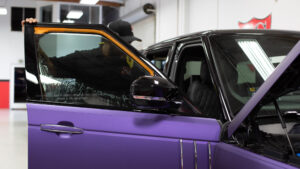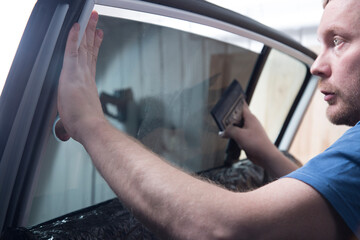What You Need to Know About Car Window Tint
If you’re interested in having a tint installed on your car, there are a few things you need to know. You’ll need to find out about the legal requirements for window tints in your state, the cost of installation, and how to choose the best tint for your car.
Getting your windows tinted is a great way to add a personal touch to your home, but it can also be a costly endeavor. The cost of Pre Cut Window Tint depends on a number of factors, including the type of windows, the size of the window, and the type of film used.
There are many different types of films that can be installed on windows. Some of these include the frosted glass film, which provides privacy while still letting in some light. Other types of films include the smart glass film, which automatically adjusts to the amount of light and heat.
The average cost of having your home’s windows tinted is about $5 to $10 per square foot. You can do it yourself or hire a professional to do the job for you.
For a high-end budget, you can have your entire home or building tinted. Those with more expensive windows will pay more for the job, though.
A window with lots of separate panes will cost you more, while flat windows will be cheaper. In addition to the film, you’ll need the right tools, such as a one-inch razor blade, a paper towel, and soapy water.
Another important step is getting the film off the window. This is a bit more complicated than simply squeezing the adhesive off, but it is necessary to avoid damaging your windows.
Lastly, you’ll need to clean out your windows to make sure they’re as clean as possible. If they’re dirty, it’s going to take longer to get them ready for the film to be installed.
Adding extra labor to your project can increase the cost of the job, although you can usually negotiate a good deal. Additional labor can include cleaning the windows, ladder work, and prep work.
“Visible Light Transmission” is a measure of the amount of visible light that reaches the eye. It is important to know this because it is crucial to protecting your eyes against UV rays.
In order to determine the amount of visible light transmittance, a number of factors are taken into consideration. Several elements such as glass thickness, color, and coatings can all affect the amount of visible light that is transmitted through the lens.
For instance, a clear 1/8-inch single-pane glass has a VLT of about 89%. On the other hand, a window tinted on the right side has a VLT of 24%.
A dark lens is a good idea on cloudy days. However, a lens that is too dark can block more of the sun’s light than a light-tinted lens.
If you want to reduce your energy bills, consider opting for a VLT window film. These films are designed to block 65% of solar heat while enhancing your view. They are also approved by the Historical Commission for use in historic buildings.
One of the most widely used methods of measuring the amount of visible light transmittance is the laser absorption spectrometry method. This technique uses a narrow collimated beam of energy to assess the concentration of visible light and extinction coefficient.
Another method is the open-path optical technique. This is a method that allows for a series of known-VLT thin films to be measured. The results are then displayed in the SpectraSuite software.
VLT is important for heat protection and security. Because of this, a new system is being developed to measure visibility more accurately and cost-effectively.
The current method, however, has a large set-up and fails to function effectively in low light conditions.
Before you begin window tinting, you need to prepare the area. This includes collecting the necessary tools and ensuring that you have a clean and dust-free work area. You will also need to make sure you have enough material for the job.

